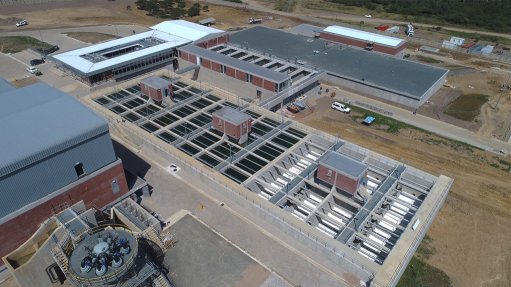
RELIABLE SUPPLY The 55 Mℓ/d potable water treatment plant in the iLembe District has been handed over to Umgeni Water
Global optimised resource management company Veolia Water Technologies South Africa recently handed over the 55 Mℓ/d potable water treatment plant to State-owned water utility Umgeni Water in the iLembe district municipality, in KwaZulu-Natal.
The project was part of the Lower Thukela Bulk Water Supply Scheme constructed at a cost of R1.4-billion funded by Umgeni Water and the Department of Water and Sanitation.
“The remote location of the construction site required careful planning and logistical accuracy among each of the project stakeholders. Veolia and its engineering, procurement, construction management partners as well as the primary stakeholders of the project Umgeni Water, engineers and the civil contractors, worked in close collaboration throughout the project to ensure a successful execution and delivery, explains Veolia Water Technologies South Africa senior project manager Pierre Michallet.
In what is one of the largest municipal potable water treatment plants undertaken by Veolia South Africa, he says the company was responsible for supplying the required mechanical and electrical components for the treatment plant as well as for the customised abstraction works that will pump water from the river.
The scheme supplies about 340 000 people in the iLembe district with potable water, from inland of Mandini to Ballito in the south. “This will be the first time many of these people receive a reliable supply of safe drinking water.”
How It Works
Raw water is abstracted from the uThukela river through a boulder and gravel trap system that prevents large matter from being deposited into the water treatment works, Michallet explains.
He says the stream is screened as it is split into four canals designed to allow finer sediments and sand particles to settle.
“The flow is further pumped from the low lift pumpstation up to the beginning of the water treatment, the hydrocyclone. Additional filtering for sediment, grit, organic matter and heavy metals then takes place through gravity using clariflocculators, the Pulsator pulsed sludge blanket clarifier and sand filtration. Underflow sludge accumulated across the treatment processes is dewatered through decanter centrifuges.”
He says, as part of the contract participation goals proposal, Veolia was responsible for fostering and developing relevant professional and technical skills among the region’s communities that can be used in the operation and maintenance of the water plant.
“A coordinated recruitment plan will be used to identify locally trained engineers, mechanical and electrical fitters, boiler- makers, and other vocations that can be used in the plant’s operation,” Michallet concludes.